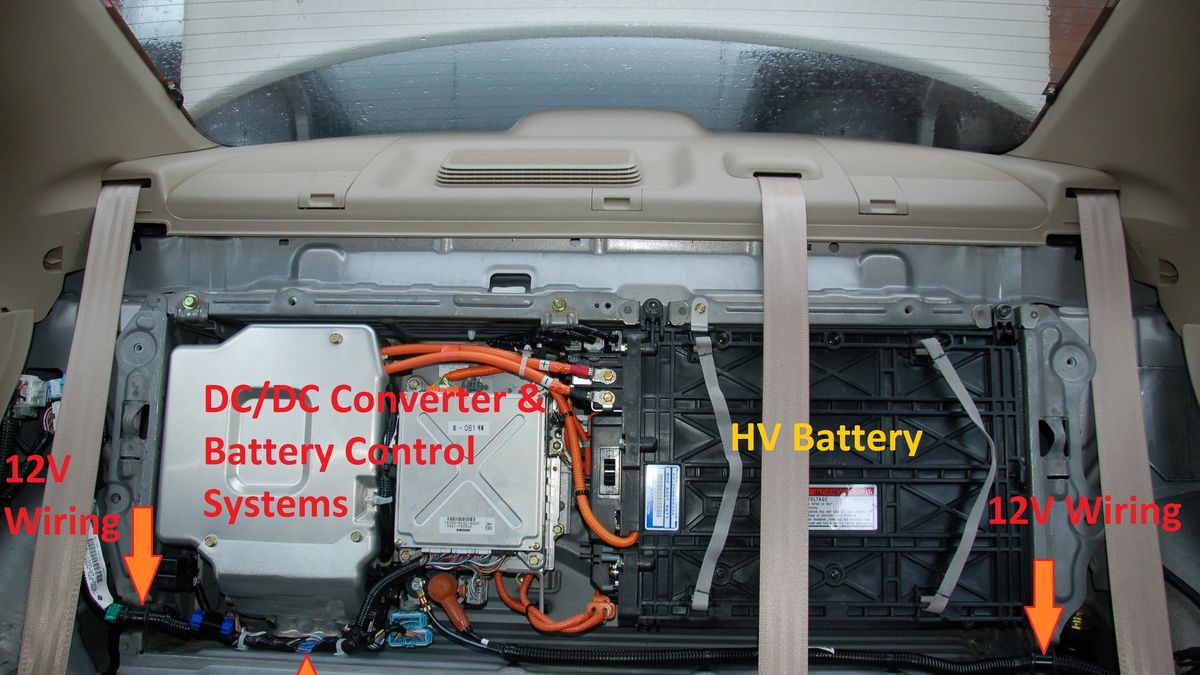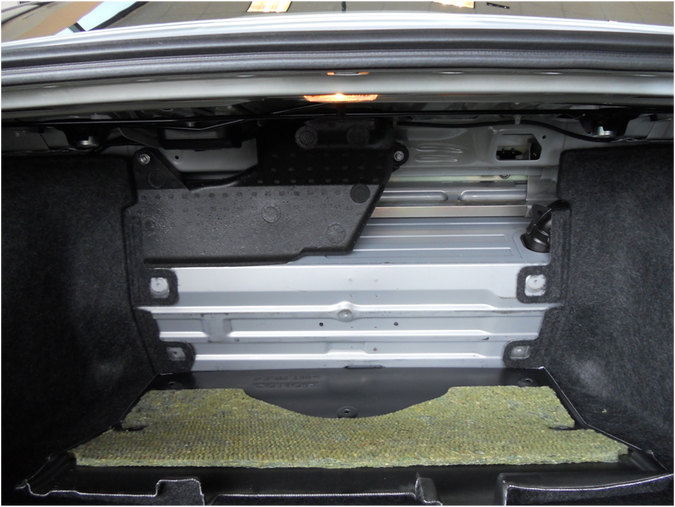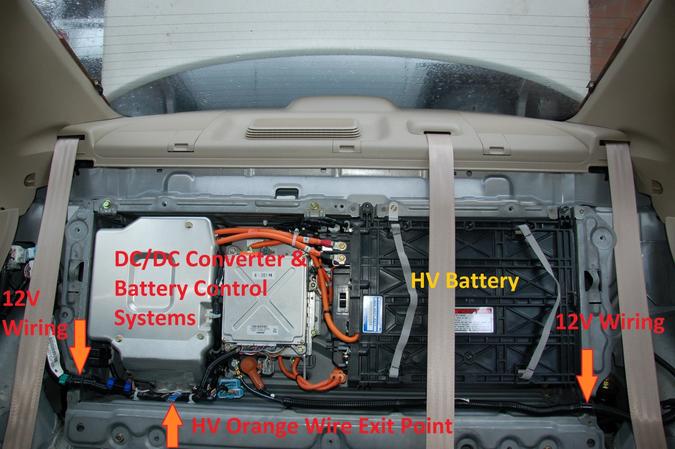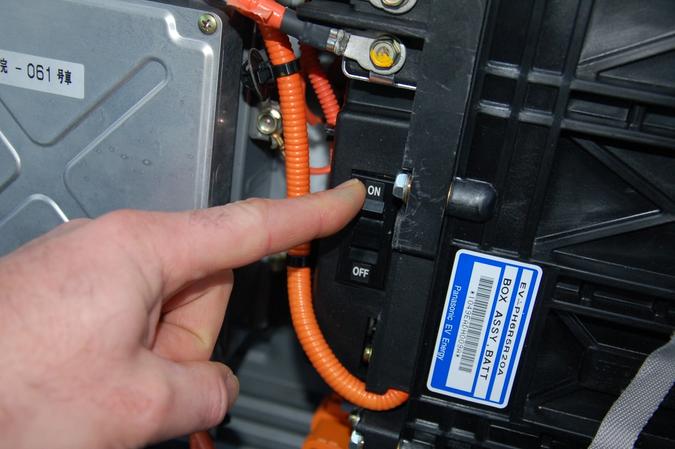
Hybrid Under-ride Solution
January 25th, 2011
Categories
By Paul Bindon & Matt Stroud
The purpose of our previous article was to encourage creative thought about a situation that would normally have a straightforward approach. As the MVA was evaluated, however, it became more apparent that the technology contained in the vehicle could make reaching the patients in the vehicle more complicated. It was deliberately designed as a tough “what if” scenario, with very specific circumstances involving a hybrid vehicle. There are several ways to approach the situation that we will discuss in this solution. Many thanks to the very knowledgeable individuals who responded with their intelligent and practical solutions to the Honda Civic Hybrid under-ride MVA scenario article.
Examining the solutions
Many of the submitted solutions assumed that it was possible to disconnect the 12V battery. While this should be an essential part of vehicle immobilization, the 12V battery is located in the front of the Honda Civic Hybrid and the scenario stated that there was no access to this part of the vehicle. This means that the SRS, hybrid systems and possibly HID headlights could still be powered up.
Under-ride MVA’s often do not deploy the SRS airbags and you cannot count on an electronic system to automatically disconnect the fuel pump, high voltage and SRS systems. It should also be noted that not all hybrid vehicles are equipped with an auto disconnect for the high voltage system that is linked with SRS deployment. In our description of the MVA, it was stated that the vehicle was on and running. Since the engine is still running, you should expect that an automatic safety disconnect of the vehicle systems has not happened. Ideally, if the driver is able, turning off the ignition would prevent some of these systems from being on and active, but would not totally eliminate them as a potential hazard.
Lifting the trailer using air bags and cribbing is an excellent approach if you have the tools available to do so in a timely manner. Some departments do not have the amount of cribbing necessary or air bags needed for this type of vehicle removal. If your department does, you have vehicle removal as an option, but only if response time and patient condition allow you the time necessary to perform the extraction. If you do not, this would mean that stabilizing the trailer, vehicle, and then proceeding without removing the Honda would be the best approach.
Here is an alternate approach to the described scenario of the Honda Civic under-ride MVA.
Step One
Stabilize the Honda by using ratchet straps attached to the wheels and routed over the rear of the vehicle, to prevent suspension movement when parts are removed from the vehicle. Stabilize the trailer with available material; cribbing, struts or even high-lift jacks can be used. Your choice will depend on how level the terrain is and what equipment you have available.
Step Two
Perform a tunnel operation through the trunk by first removing the trunk lid and interior trunk trim. You will now have a view of the back of the high voltage (HV) battery housing as pictured below in Photo #1. Now, using cutters or a recip saw, cut away the rear package tray as seen from the front, in Photo #2. You will now have a view of the back of the HV battery but still won’t have access to wires, switches and mounting bolts which are located on the HV battery front, facing the passengers.
Step Three
Still from the back, continuing with the saw, cut down on the outside edges of the battery box as pictured in Photo #2, allowing the HV battery to fall towards you into the trunk. You now have a view of the HV battery with the 12V wires, orange wires, switches and bottom mounting bolts visible. Both Photo #2 and Photo #3 show a Honda Civic HV battery viewed from the front, with the cover plate removed. In Photo #3 note the location of the actual HV battery on the drivers’ side of the battery box. The passenger side of the box is used to store the DC/DC converter and HV battery control systems. Note the location of the 12V system wiring on the drivers and passengers side bottom corners. The high voltage “orange wires” exit the battery box on the passenger side lower corner.
Step Four
As shown in Photo #4, the service disconnect switch is mounted on the front of the battery, and is now accessible. Remove the small bolt on the cover for the service disconnect and flip the switch from “on” to “off”. This will eliminate the connection of the high voltage battery to the rest of the vehicle, but will not give you a visual indication that anything has happened.
The high voltage is now contained within the battery itself. Cutting the 12V wire harness on the drivers and passenger side will also eliminate any possible computer system connection to the rest of the vehicle, but will also give no visual indication of effectiveness. Since the “orange wires” will no longer contain voltage, they can now be cut to remove the high voltage battery from the vehicle. Continue with extrication as you would with a non-hybrid Honda Civic.
Step Five
Remove the rear seat back. Package the two children from the rear seat area and remove on backboards if needed. Depending on vehicle roof condition, a hydraulic ram may be used to maximize the space necessary to continue. Use power or manual seat adjustments if possible to help access the patients in the front. If no easy adjustment of the seat is possible, proceed with caution during seat back removal as the vehicle may be equipped with side SRS airbags and seatbelt pre-tensioners that contain pressurized gas cylinders and pyrotechnic charges. Cut the seat cover material and inspect for hazards before cutting the seat frame material. Headrest DVD players, power seat motors and seat heaters have power sources that should be eliminated before cutting seat SRS wire harnesses. These systems would not be a concern on a vehicle that was first powered down by shutting off the vehicle and removing the 12V battery negative cable. Lower seat removal may be necessary if there are entrapment issues with the patient’s lower extremities. Finally, remove the front seat passengers.
Conclusion
Can a tunnel method be used on any Hybrid vehicle with a vertically mounted HV battery?
- Honda Civic Hybrid 03-05
- Honda Civic Hybrid 06-current
- Honda Accord Hybrid 05-07
- Ford Fusion Hybrid
- Mercury Milan Hybrid
- Lincoln Mark Z Hybrid
Yes it can! Once you understand how the technology works, you can easily and safely use the tunnel method to manage this “what if” scenario.
Yes, there are multiple methods that would allow you to safely remove the patients from this vehicle but depending on your unique circumstances; it’s nice to have another option to choose from.



